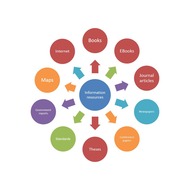Internet Searches: Selecting appropriate sources - Remix for Mobile
(View Complete Item Description)Learners are using the internet on their smart phones everyday to collect information for school or daily life. The problem is that search engines can produce an excessive number of potential sources, even when filtering the search. This lesson will teach the adult learner how to use a smart phone to define key words, specify criteria, and evaluate the appropriateness of sources. The learner will develop a customized checklist for the search and demonstrate the acquired knowledge of selecting appropriate sources.
Material Type: Lesson




















